Do you want to experience the thrill of flying a drone like never before? You should consider getting an FPV (First Person View) drone. FPV drones give you a real-time view from the drone’s camera, making you feel like you’re flying. But what about normal drones? Are they not as good as FPV drones? Not necessarily. Regular drones have advantages, such as longer flight times and more stable cameras.
So, which type of drone is right for you? This detailed comparison between FPV drones vs. normal drones in terms of their flight performance, camera, gimbal, video transmitter, FPV goggles, and price will help you choose the right one for your needs.
FPV Drone vs Normal Drone- Which One is Right for You?

What is an FPV drone?
An FPV (First Person View) drone is a type of drone that allows the pilot to see what the drone sees in real-time. It is done by transmitting a live video feed from the drone’s camera to the pilot’s goggles or monitor.
FPV drones are used for racing and freestyle flying, where the pilot must have a clear view of the drone’s surroundings to fly it safely and precisely. They are also becoming increasingly popular for aerial photography and videography, allowing the pilot to capture stunning footage from unique perspectives.
How does an FPV drone work?
An FPV drone consists of the following main components.
A camera
The camera captures the live video feed transmitted to the pilot’s goggles or monitor.
A video transmitter
The video transmitter sends the live video feed from the camera to the pilot’s goggles or monitor.
A receiver
The receiver receives the live video feed from the video transmitter and displays it on the pilot’s goggles or monitor.
Goggles or monitor
The goggles or monitor display is the live video feed from the receiver.
The camera, video transmitter, and receiver are all integrated into the drone. The goggles or monitor are a separate piece of equipment that the pilot wears.
* Agile for acrobatics and fast maneuvers
* Real-time immersive FPV experience with goggles
* Customizable flight controllers for racing precision
* Compact frames designed for tight spaces
* Thriving community and competitive racing events
* Good for indoor flying and tight environments
* Potential for advanced aerobatic maneuvers and tricks
* The steeper learning curve, especially for beginners
* Short flight times due to high-performance demands
What is a normal drone?

A normal drone is a type of drone that does not have an FPV system. The pilot cannot see what the drone sees in real-time. Instead, the pilot controls the drone by looking at a remote control screen or using a smartphone app.
Normal drones are used for aerial photography, videography, and mapping. They are also sometimes used for racing and freestyle flying, but they are not as well-suited for these activities as FPV drones.
How does a normal drone work?
A normal drone has five main components that work together to make a normal drone operational.
There is a controller that the pilot uses to control the drone’s movements. The GPS module helps the drone to stay in position and to return to its home location.
The camera captures images or video footage. The motors move the drone’s propellers, which cause the drone to fly.
The last main component is the propeller, which creates lift, which allows the drone to fly.
The controller, GPS module, camera, motors, and propellers are all integrated into the drone.
* Extended flight times for longer aerial sessions
* High-resolution cameras with stabilized gimbals
* Multiple intelligent flight modes for creative shots
* User-friendly controls suitable for beginners
* Diverse applications, including photography and surveying
* Wide range of models available from various brands
* Less immersive flying experience without FPV goggles
What is the main difference between FPV drones and normal drones?
The main difference between FPV drones and normal drones is that FPV drones allow the pilot to see what the drone sees in real-time, while normal drones do not.
It makes FPV drones more suitable for racing and freestyle flying, where the pilot must have a clear view of the drone’s surroundings to fly it safely and precisely.
However, normal drones are better suited for aerial photography, videography, and mapping tasks, where image quality is more important than the pilot’s visibility.
FPV Drones vs. Normal Drones- Head-to-Head Comparison

Let’s look at the detailed comparison of the features of regular and FPV drones for more convenience.
Flight Performance
FPV drones are more agile and maneuverable than normal drones. It is due to their small and lightweight size, which makes them easier to control.
FPV drones are also faster than normal drones, which makes them more suitable for racing and freestyle flying.
Camera
The camera is one of the most important features of a drone. FPV drones have lower-resolution cameras than normal drones.
However, the image quality of FPV drones is still good enough for most purposes, such as recording aerial footage or taking photos.
Gimbal
A gimbal is a device that stabilizes the camera so that the footage is smooth and not shaky. FPV drones do not have gimbals, while normal drones often do.
Remember, gimbals add weight and complexity to a drone, making flying more difficult.
Video Transmitter
The video transmitter is the device that sends the video feed from the drone’s camera to the pilot’s FPV goggles.
FPV drones have higher-power video transmitters than normal drones. FPV drones must be able to send the video signal longer distances.
FPV Goggles
FPV goggles are the pilot’s devices to see the video feed from the drone’s camera. FPV drones need special FPV goggles, while regular drones can be flown with regular drones.
Price
FPV drones are more expensive than normal drones. FPV drones are more complex and need more specialized components.
Comparison Table
Feature
Frame Size and Design
Flight Controller
Camera System
Video Transmission
Remote Controller
Propulsion System
Battery and Flight
Time
Flight Modes
Applications
User Skill Level
Price Range
FPV Drones
Compact and agile frames
Advanced,
customizable for racing and acro
Low-latency cameras for FPV flying
Live feed to goggles or
screen
Customizable controls
for racing maneuvers
High-power motors for
speed and agility
Short flight times
(3-5 min) due to racing
Racing, freestyle,
acrobatics
FPV racing, freestyle
flying
Advanced, Need flying
experience
$150-$3000+
Normal Consumer
Drones
Varied sizes, stability-focused designs
Stable controllers with GPS and sensors
High-resolution cameras with gimbals
Live feed to
smartphone or controller screen
User-friendly with
one-touch features
Stable flight with
brushless motors
Longer flight times
(20-30+ min) for aerial work
GPS-assisted,
follow-me, intelligent modes
Aerial photography,
videography, mapping
Beginner-friendly,
suitable for all levels
$100-$2000+
Are FPV drones hard to fly?
FPV drones are hard to fly. The pilot relies on a live video feed from the drone’s camera, which can be disorienting. Also, FPV drones are more speedy and maneuverable than regular drones, which makes them difficult to control.
Here are some main factors that make FPV drones hard to fly.
Relying on a live video feed
Judging distances and speed becomes challenging without direct visual contact.
Speed and maneuverability
Their enhanced capabilities increase difficulty, especially in windy conditions.
Price
FPV drones can be expensive, discouraging practice, and leading to accidents.
Starting with a small, easy-to-fly drone in a safe area is crucial for beginners. Gradually progressing to more challenging drones and environments with experience is recommended.
Final words:
FPV and normal consumer drones offer distinct experiences. FPV drones bring the thrill of high-speed racing and acrobatics, demanding skill and dedication. Meanwhile, normal drones excel in capturing stunning aerial visuals designed for ease of use.
For newcomers, starting with a normal drone is wise to grasp the fundamentals.
You can upgrade to FPV drones to enjoy a more exciting aerial experience as proficiency grows.
Frequently Asked Questions (FAQs)
- Do normal drones offer intelligent flight modes?
Normal drones offer a variety of intelligent flight modes like follow-me, waypoints, and orbit to improve their versatility and creativity.
- Do FPV drones come with stabilized cameras?
FPV drones prioritize low latency over stabilization, so they do not have the same level of camera stabilization as regular drones.
- Can I use FPV goggles with any drone?
FPV goggles are designed specifically for FPV drones with compatible video transmission systems. They do not work seamlessly with regular drones.
Jose E. Johnson is a true tech prodigy whose lifelong passion for technology and gadgets has blossomed into remarkable drone expertise. From the moment he laid eyes on his first electronic toy as a child, Jose was captivated by the limitless possibilities of innovation. As he grew, so did his fascination with cutting-edge tech, leading him to become a bona fide drone expert. With an insatiable thirst for knowledge, Jose delved deep into the intricacies of drone technology, amassing a wealth of technical knowledge and hands-on experience. Now, he shares his wisdom through insightful drone reviews and invaluable tips for fellow enthusiasts, making him a trusted source in the drone community.

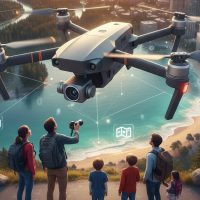
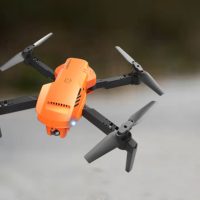
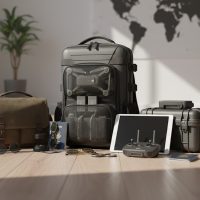
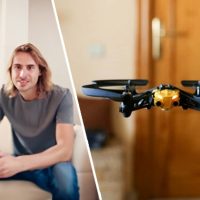
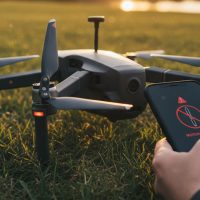
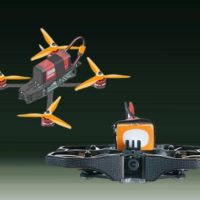
Leave a Reply